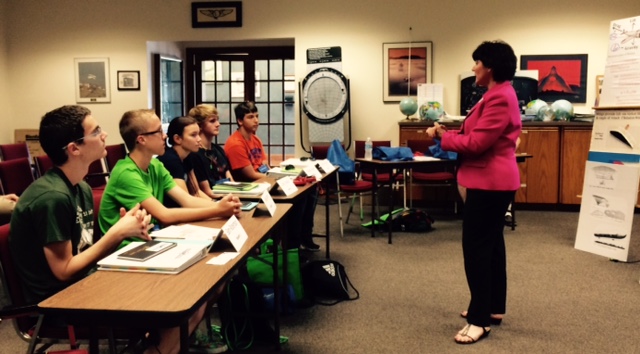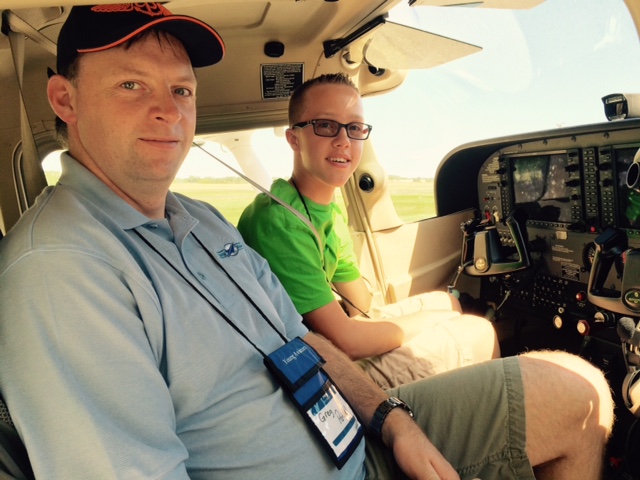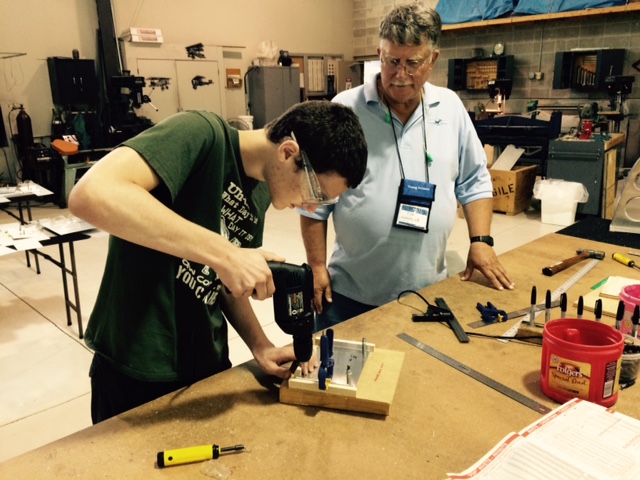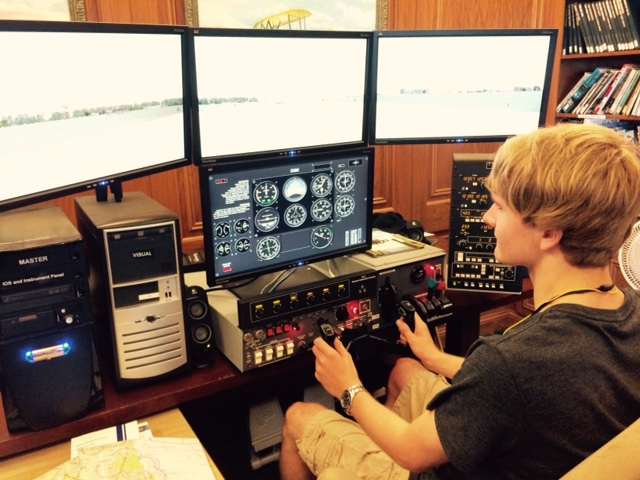Ford meets with Young Aviators
UW-Parkside Chancellor Debbie Ford has been invited to participate the past two years. Her role is to help students sort out the sometimes daunting, sometimes confusing task of choosing the next step in their education. "As part of that college or university selection process, as you begin to identify your dream school, find that place that fits you," Ford told students from southeastern Wisconsin and northeastern Illinois. "Don't pick a college or university because that's where your best friend is going. It's not going to work out if it is not where you want to go. It would be great if your best friend is at the same university, but think about where you fit and where you want to go."

Young Aviators is designed to get students thinking. Guest speakers like Ford and other leaders of top businesses in the area get students thinking about life after high school. Aviation-related instruction and actual flying get students thinking about science, technology, engineering and math -- commonly referred to as STEM. Dr. Sean Dwyer, a Young Aviators instructor who is retired after a career in research and development at SC Johnson, describes aviation as the appetizer and STEM as the main course. "STEM subjects are as relevant to future journalists and teachers as they are to future astronauts," Dwyer said.
Tim Thompson is chairman of Young Aviators, a nonprofit organization made up of educators, business leaders, pilots and members of Racine's Experimental Aircraft Association (EAA) Chapter 838. Attendance each summer is limited to 12 students to ensure sufficient flying time given access to just a few private airplanes. "One of the questions we ask (during the interview) is, 'what books have your read lately?'" Thompson said. "Some students aren't reading much at all." This year, participants were selected from a group of 20 who applied.

Dwyer, who holds a Ph.D. in chemistry and says flying is strictly a hobby, uses 10 laws of chemistry and physics that are the foundation of aviation. Bernouilli's Principle, for example, explains why air moving over the shape of a wing creates reduced pressure on the top and generates lift. Dwyer says students need to understand the science of aviation in order to become effective pilots. "When something goes wrong in your car, most of time you can pull over and find out what the problem is," he said. Pilots, on the other hand, need to understand what's at the foundation of the every situation.
Young Aviators gives students the opportunity to apply the theories of science and technology to the actual process of flying. In addition to guest speakers and time in the airplane, students have access to computer-controlled flight simulators loaded with images from more than 300 airports around the world. They also build the actual parts of an airplane in a fabrication lab.

In a promotional brochure, a past Young Aviator stated that the program went beyond expectations. "I never would have imagined the amount of individual training I would receive," the student wrote.
Ford told the 2015 class that learning more than you thought possible is a good thing. "Continue stretching your minds," she said. "You're going to stretch your minds in high school, but when you get to college, we're going to make your brain hurt. That's what college is all about – it's stretching you in ways you never thought possible."
Just like Young Aviators.
